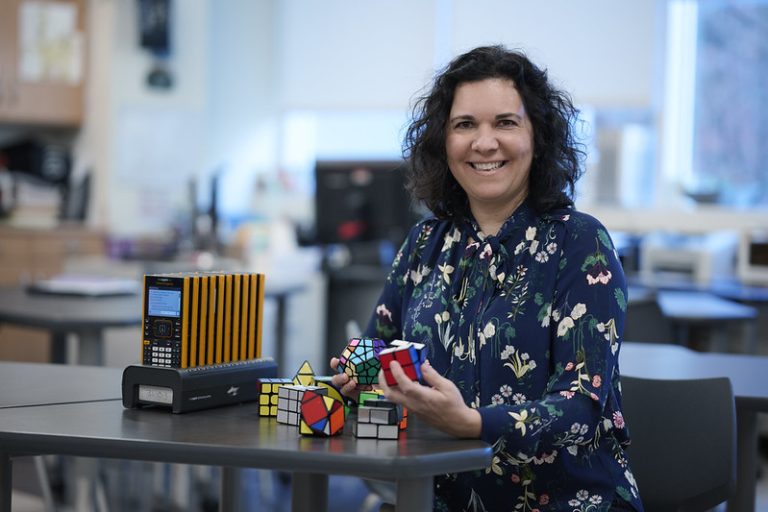Ana Casas Sanmartín, a geometry teacher at Woodrow Wilson High School, was sitting in her classroom recently when a former student, Aaron Castro, came up to her and made her day. The senior told her, “Last year was the first time I understood math. I really was struggling. I never figured it out until your class.” And then he added, “I love angles now.”
For Casas, that is what teaching is all about: helping students feel successful and proud of what they can achieve. Her passion shines through to her fellow teachers and students alike.
“Mrs. Casas’ dedication to her students is undeniable, and her intentionality has resulted in a classroom culture where students feel comfortable and engaged,” Woodrow Wilson teacher cluster lead Anne Marie Light said. “Many students feel like math is unachievable for them and they have low confidence in their math skills, but Mrs. Casas breaks it down so they understand. I can confidently say she knows all of her students and what they need personally to be successful.”
Those student connections did not always come easily to Casas. She first started teaching in 2010 in Spain, where she was born and raised. It was not until 2012 that she came to Texas through a program called Visiting Teachers. She said her first year in the United States was “pretty rough” as she worked through cultural differences to get to know her students and to understand how to create a safe, engaging learning environment for them, but she has carried those lessons with her ever since.
“I want them to know that they are the protagonists of this school year,” Casas said. “They are the ones who are going to learn and have those aha moments, and they are going to struggle and learn from their mistakes. It’s tough because they have to really put in some effort, but they also feel that reward when they get it by themselves. It’s so rewarding at the end of the day.”
Some of the strategies she uses to build a successful classroom environment include creating clear expectations, establishing consistent routines and emphasizing communication so she knows how to help her students. She also incorporates small group activities where students can learn from each other while mastering their independent practice.
From the beginning of each school year, Casas shows up with a plan. She still remembers the teachers she had growing up who remembered her name and connected with her, so she always challenges herself to learn every student’s name within the first two weeks of the year. She develops those connections by giving her students additional space to share about their lives in the projects they do every nine weeks.
Having a child of her own has only increased Casas’ passion for empowering her students. Her daughter was born in 2021 with spina bifida, and Casas has loved watching her grow and accomplish milestones despite the obstacles in her path.
“It’s something that I see in my students as well,” she said. “Having my baby has made me also think about how important it is to support my students, especially the ones who struggle. I want them to know they have the capacity and they can make it if they put in the effort. That’s one thing we have to tell them: They are so worth it.”

